
TEMPUR-Pedic
Mattress Express has exciting news to announce!
TEMPUR-Pedic mattresses are available at all our locations!
-
 Sale
SaleTEMPUR-Adapt®
Regular price From $1,499.00Regular priceUnit price / per$1,699.00Sale price From $1,499.00Sale -
 Sale
SaleTEMPUR-Breeze®
Regular price From $3,599.00Regular priceUnit price / per$3,899.00Sale price From $3,599.00Sale -
TEMPUR-ActiveBreeze® Smart Bed
Regular price From $9,098.00Regular priceUnit price / per$9,598.00Sale price From $9,098.00Sale
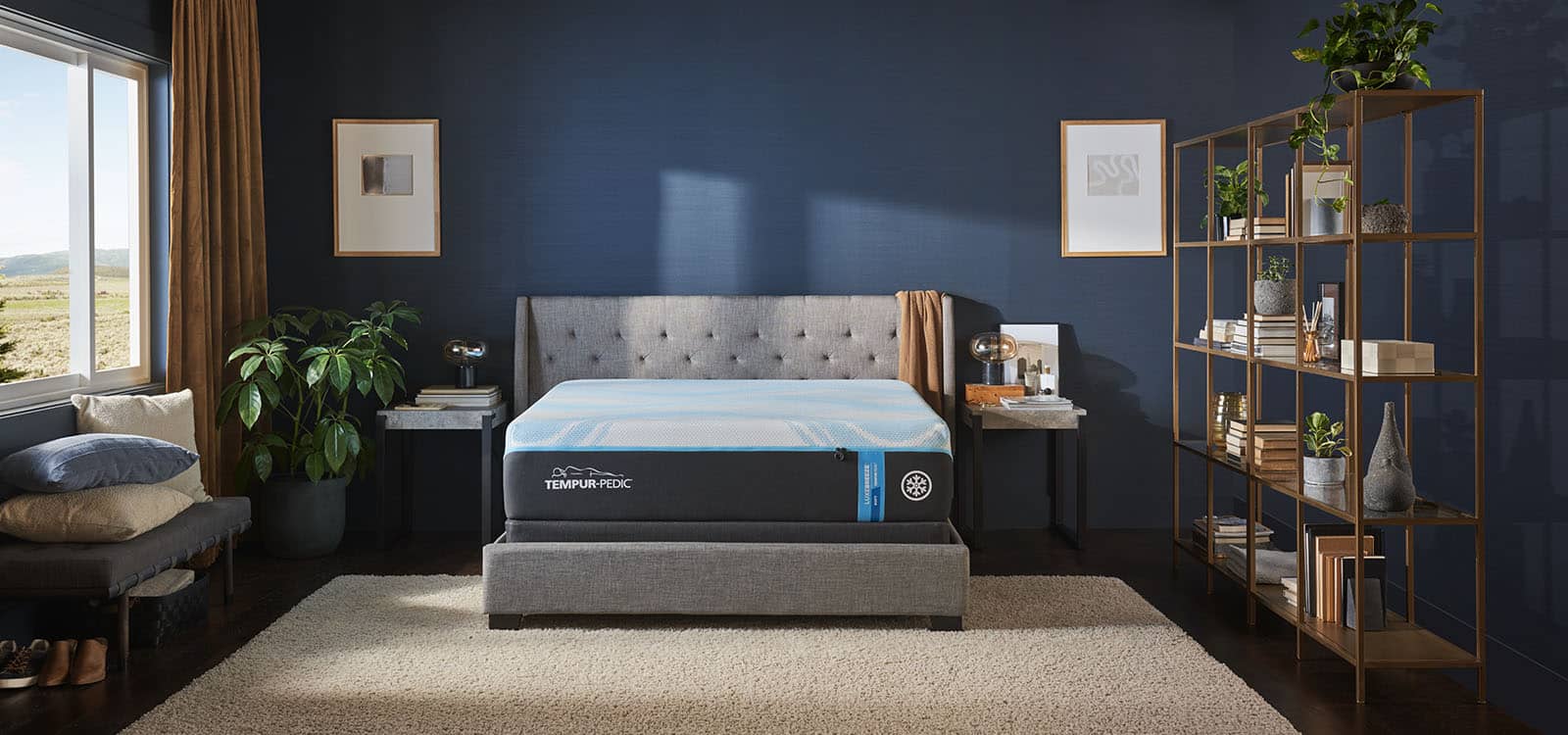
The History of TEMPUR-Pedic
TEMPUR-Pedic
In the 1960s, NASA contracted an aeronautical engineer and a scientist to create an open-cell material to absorb the G-force for astronauts traveling into space. The open-cell material developed had unusually high energy absorption while still remaining soft and pliable. In aerospace and aviation applications, this new material could absorb sudden impacts without shock or bounce, then return to its original shape even after 90% compression. It provided great comfort for aircraft seats and served as a buffer against pressure, increasing the likelihood of survival during a crash.
They first referred to this open-cell material as slow springback foam because it would shape to whatever was pressing against it and then slowly spring back to its original shape once the pressure was removed. The name later changed to temper foam. In the early 1980s, NASA marked the formula for temper foam as public domain, and a number of companies started working with it to further develop its commercial use.
Many gave up but after close to 10 years perfecting the temper material for consumer use, specifically for sleepers, the TEMPUR-Pedic Swedish Mattress was introduced to the world in 1991. Within three years, 50,000 TEMPUR-Pedic mattresses were sold in Sweden, a country with a relatively small population. Shortly after the introduction of this Swedish mattress, TEMPUR-Pedic Inc. was created in North America. By the end of 1995, TEMPUR-Pedic Inc. was a $14 million company.
TEMPUR-Pedic Today
TEMPUR-Pedic’s founders were eager to improve the original application, so their scientists rigorously tested and enhanced the foam to increase its adaptability, heat dissipation and durability. They did not stop there, though. Testing continues today as scientists work to develop and discover new technology.
Today’s TEMPUR foam is uniquely formulated to respond to your body’s weight, shape and temperature. Its body-conforming support, infinite adaptability and absorption, unparalleled pressure-point relief, and motion separation helps deliver uninterrupted, deep sleep each and every night.
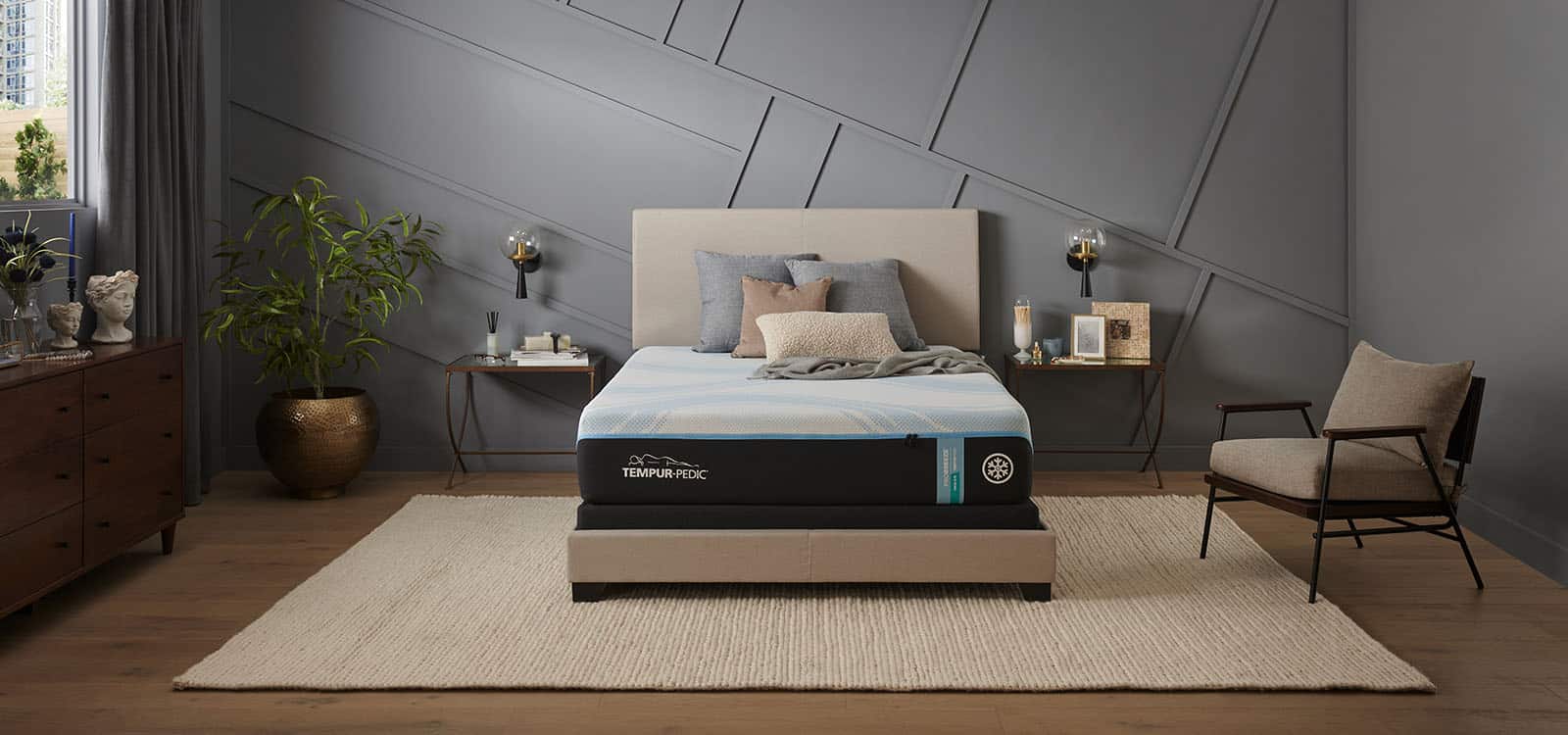
TEMPUR-Adapt Mattress Collection
The TEMPUR-Adapt mattress collection features a TEMPUR support layer which offers responsive support and helps distribute your body weight evenly across the mattress. The top TEMPUR comfort layer conforms to your body to give you the perfect night of rest.
TEMPUR-Adapt Mattress
Each TEMPUR-Adapt mattress features a unique layer of TEMPUR-ES comfort material for a softer feel. It works in combination with an original TEMPUR support layer for advanced, all-night adaptability, truly personalized comfort, pressure relief, unparalleled motion cancellation and all-over support. The TEMPUR Cool-to-Touch cover protects the inside layers and regulates your body temperature each night.
The TEMPUR-Adapt mattress is available in a medium and a medium hybrid version at Mattress Express.
TEMPUR-ProAdapt Mattress
The TEMPUR-ProAdapt memory foam mattress combines innovative comfort and support layers to create a comfortable sleep surface that gently cushions, conforms to your body and reduces pressure. The TEMPUR-ES comfort layer offers an excellent support layer of TEMPUR-APR that provides incredible pressure relief and proper body alignment. Its TEMPUR Cool-to-Touch SmartClimate system promotes a refreshing sleep temperature throughout the night. The TEMPUR-ProAdapt has 20% more TEMPUR Material in its comfort layer and support layer than the TEMPUR-Adapt Series.
The TEMPUR- ProAdapt mattress is available in a soft, medium or firm mattress at Mattress Express.

TEMPUR-Luxe Adapt Mattress
The TEMPUR-Luxe Adapt memory foam mattress features the TEMPUR-APR+ support layer that provides more pressure-relieving power than ever before and unparalleled motion cancellation. The TEMPUR-ES comfort layer quickly conforms to your body with a soft and soothing feel. The TEMPUR Cool-to-Touch SmartClimate system provides the optimal sleeping temperature each and every night through its body temperature regulation. The TEMPUR-Luxe Adapt has 20% more TEMPUR® Material and delivers 30% more conforming support than the TEMPUR-ProAdapt Series.
The TEMPUR-Luxe Adapt mattress is available in a soft or firm mattress at Mattress Express.
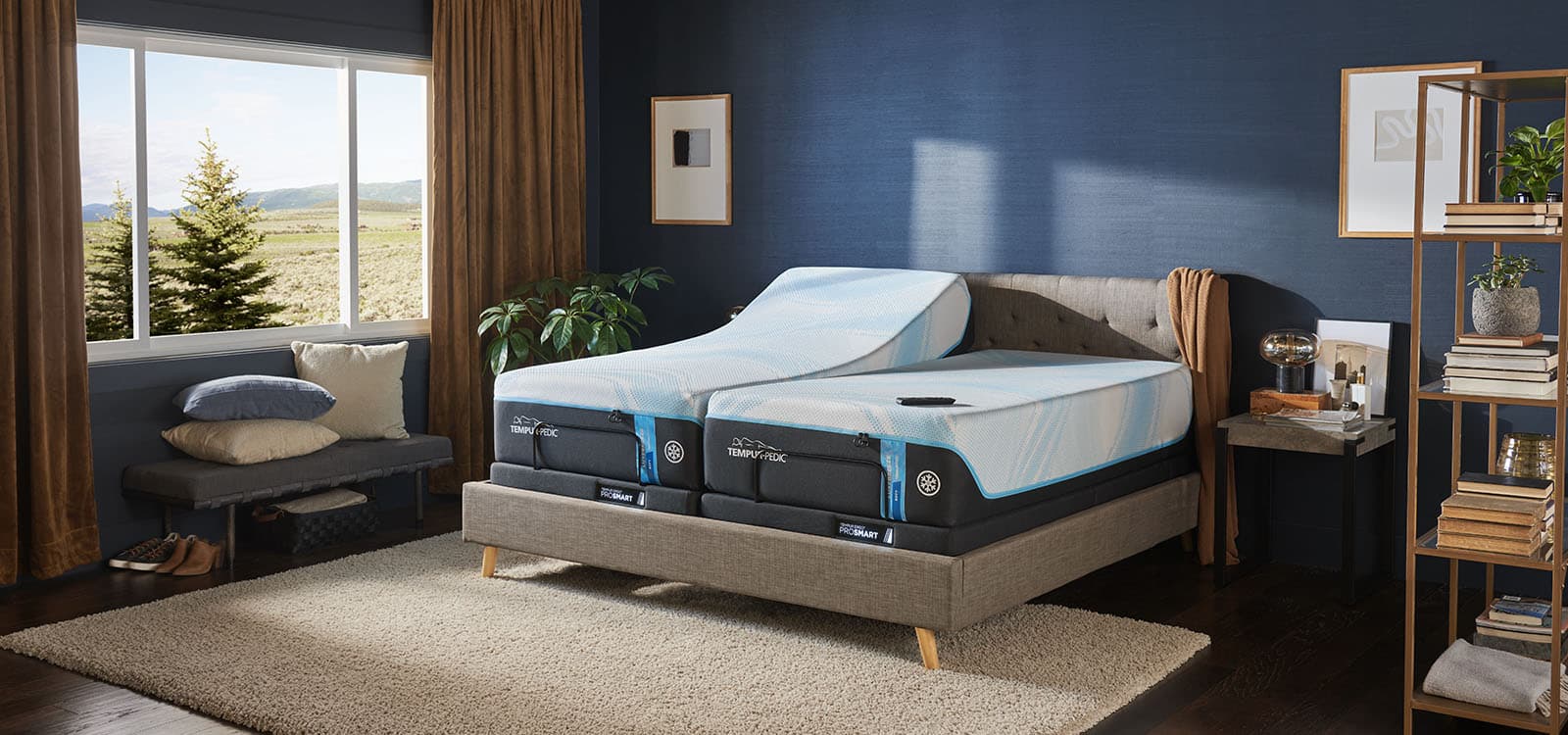
TEMPUR-Breeze Mattress Collection
A cooler sleep environment helps your body temperature drop to the ideal climate needed to fall asleep faster and longer. TEMPUR designed their new TEMPUR-Breeze mattress collection in a thermal laboratory to help manage the climate between your body, your mattress and your covers, for a cooler, deeper sleep all night long.
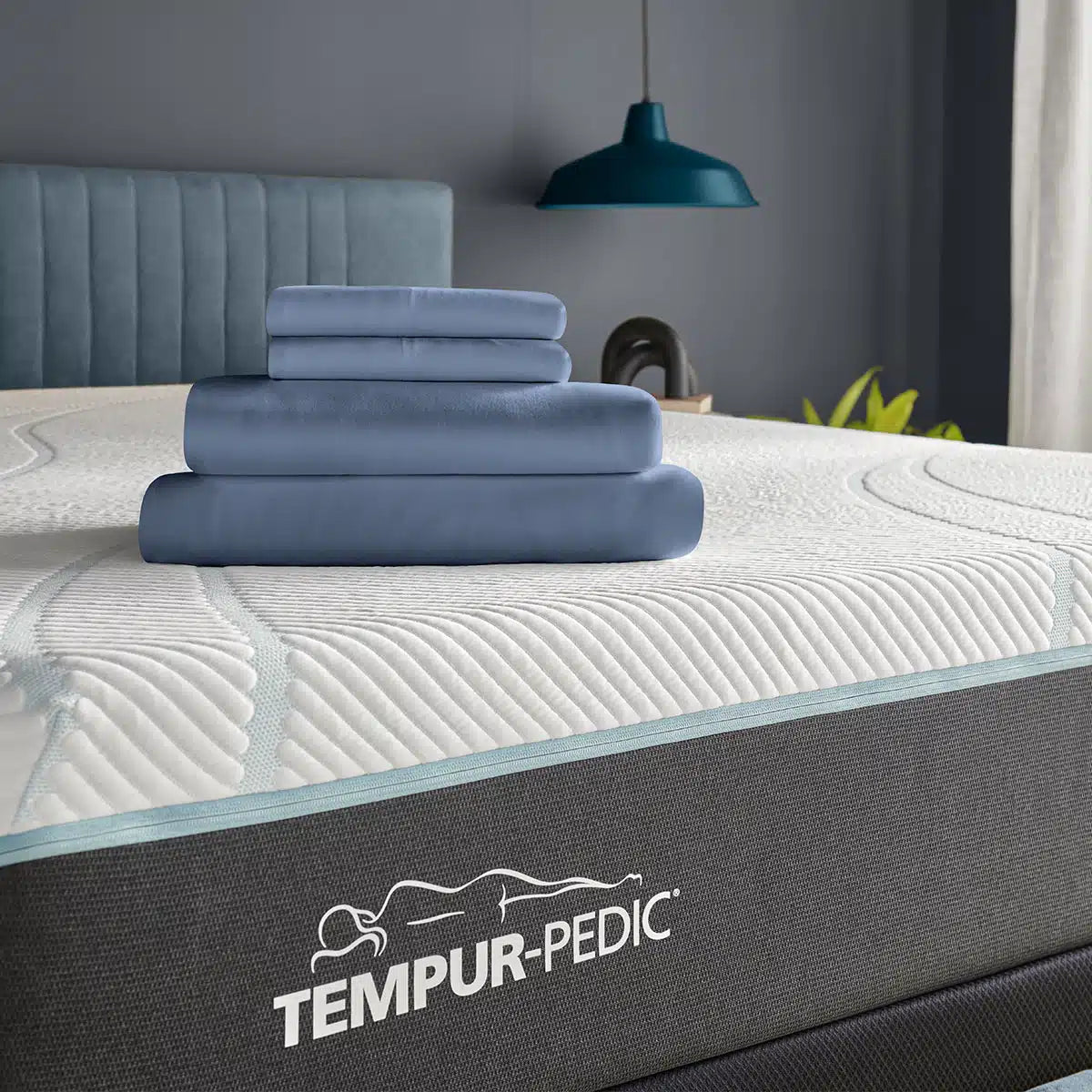
TEMPUR-PRO Breeze Mattress
The TEMPUR-PRObreeze feels three degrees cooler throughout the night compared to the Adapt Collection. The TEMPUR-PRObreeze features cooling comfort with maximum airflow and optimal heat removal. The TEMPUR-CM+ and PureCool comfort layers give advanced, all-night adaptability for truly personalized comfort, unparalleled motion cancellation and support in the original TEMPUR support layer. The TEMPUR Cool-to-Touch SmartClimate cover not only protects your mattress but is infused with cooling fibers that continues to maintain your ideal body temperature for uninterrupted sleep.
The TEMPUR-PRObreeze is available in a medium or medium hybrid at Mattress Express.
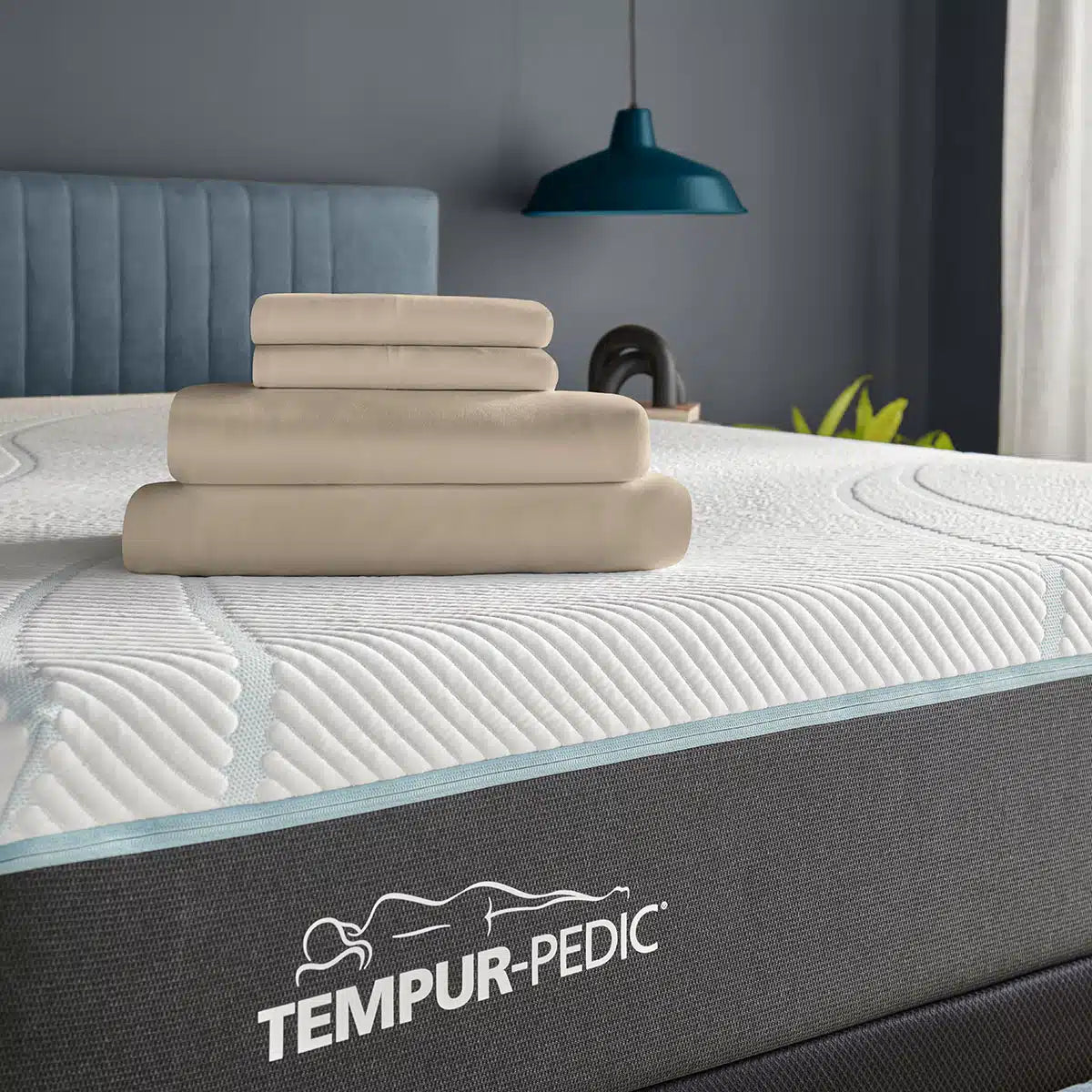
TEMPUR-LUXE Breeze Mattress
The TEMPUR-LUXEBreeze feels up to eight degrees cooler throughout the night compared to the Adapt Collection. The TEMPUR-LUXEBreeze Memory Foam mattress features comfort layers of TEMPUR-CM+ and TEMPUR-PureCool+ technology that helps keep you cool throughout the night, and the ventilated TEMPUR-APR support layer relieves pressure and provides unparalleled motion cancellation. This combines to give you all the ideal comfort and the optimal support you need. The TEMPUR Cool-to-Touch SmartClimate cover not only protects your mattress but is infused with cooling fibers that continues to maintain your ideal body temperature for uninterrupted sleep all night long.
The TEMPUR-LuxeBreeze is available in a soft or firm mattress at Mattress Express.
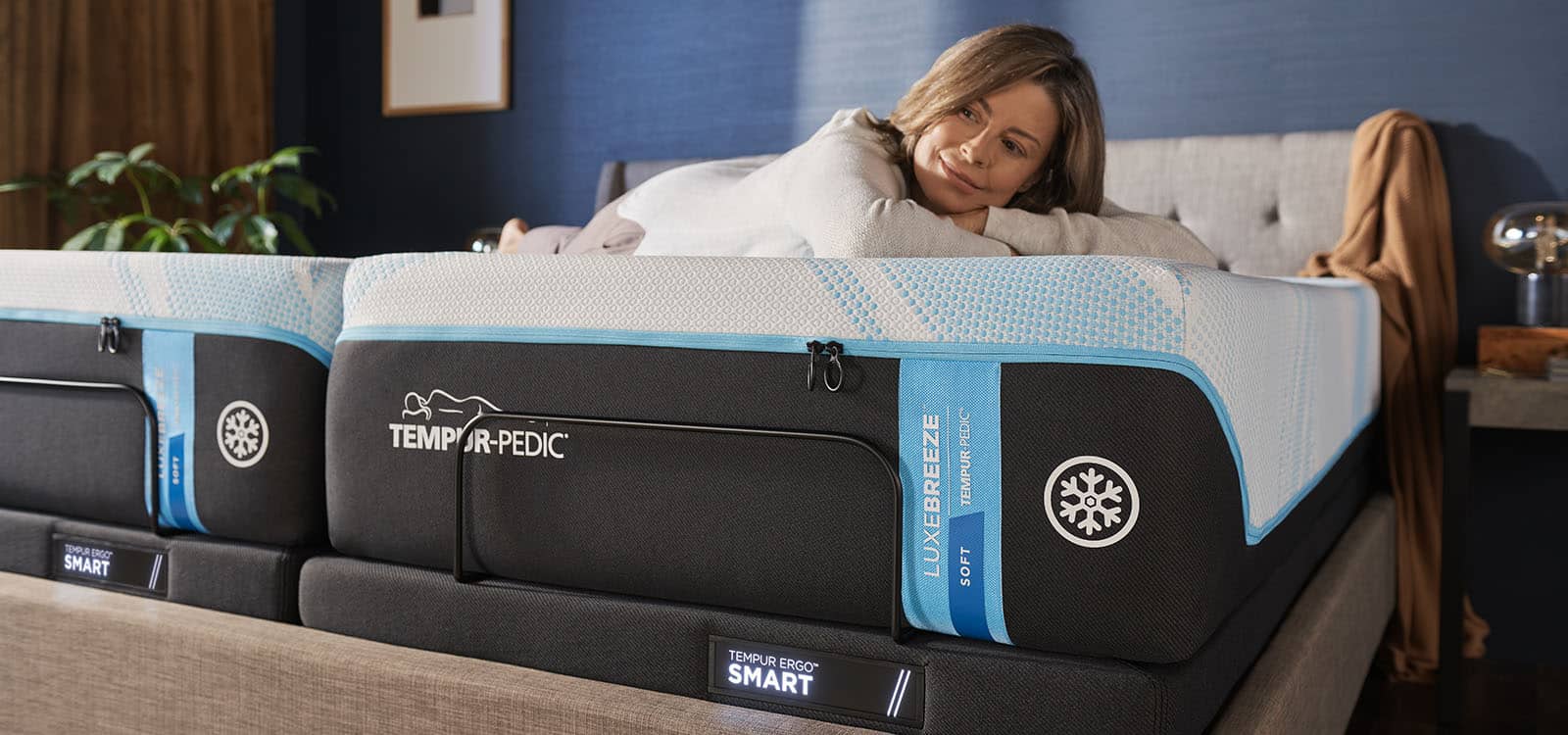
Try TEMPUR-Pedic For Yourself
TEMPUR-Pedic is not just mattresses. They also have top-of-the-line sleeping accessories like pillows and toppers available. Stop by your Mattress Express location of choice to have one of our sleep specialists introduce you to all Mattress Express and TEMPUR-Pedic has to offer.
YOUR LOCAL SLEEP SPECIALISTS
Ready to Find the Right Mattress?
Just visit any of our locations in Upstate New York for a one-on-one consultation with a sleep expert. We can help you choose the right mattress for your health and budget!



